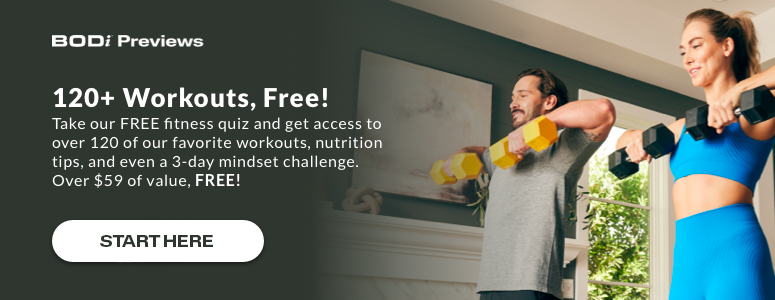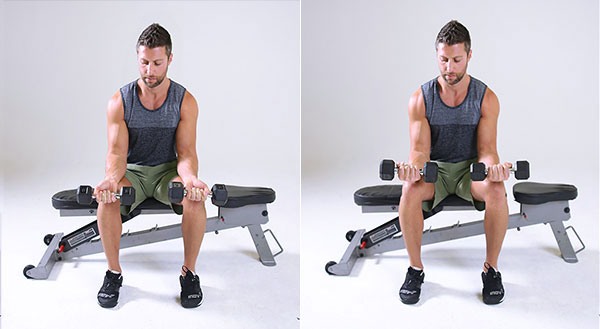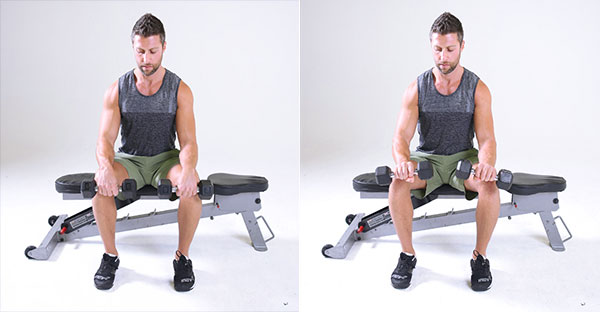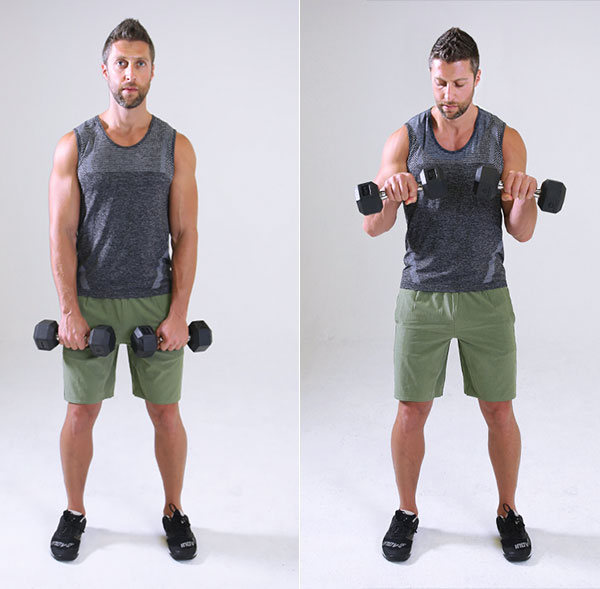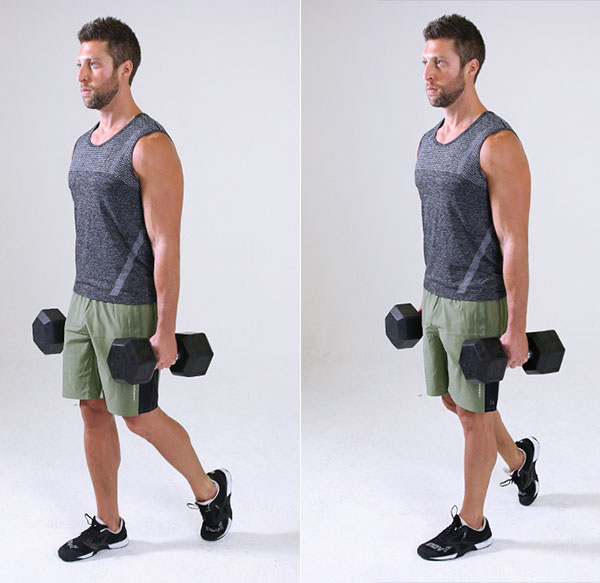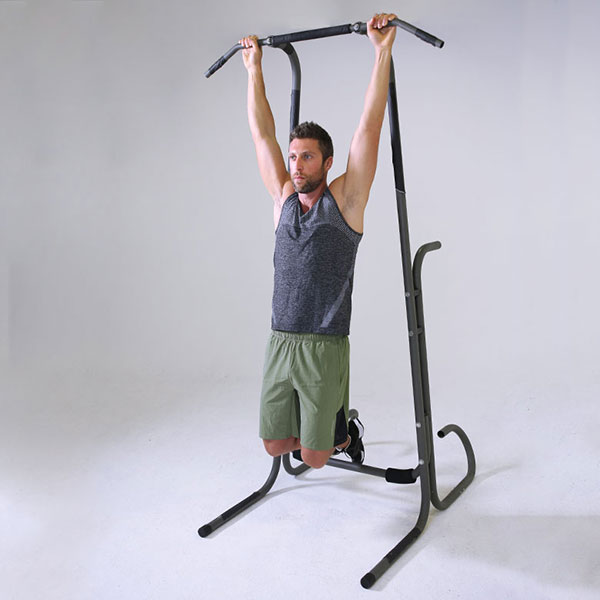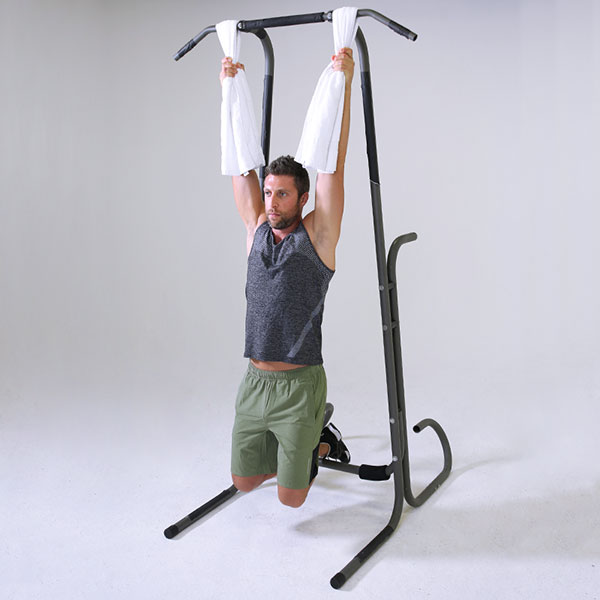14 of the Best Forearm Exercises for Muscle Growth and Strength

You’ve probably put a lot of work into strengthening your upper body to make lifting, pushing, and pulling heavy loads a cinch, but what about your grip strength? Adding forearm exercises to your workout can help strengthen these often-overlooked muscles.
When you’re targeting the forearm, workouts should incorporate various flexion and extension exercises, carries, and holds, says Cody Braun, NASM performance enhancement specialist. They’ll not only blow up your forearms, Popeye-style, but they also make everyday tasks more manageable.
“From bags for work, to kids, to suitcases, to furniture, we all have to carry things,” says San Diego-based trainer Pete McCall, CSCS, founder of the All About Fitness podcast. “Having forearm strength, and therefore grip strength, means you have the ability to pick up heavy stuff and move it around.”
Building strong forearms is also important for serious weightlifters.
“The stronger your grip, the more you can lift in moves like overhead presses, deadlifts, kettlebell swings, clean-and-jerks, biceps curls, and bench presses,” McCall adds.
What Forearm Muscles Do
The forearms are comprised of a number of smaller muscles that move in four main ways, Pire explains:
- Wrist flexion: bending your palm inward
- Wrist extension: raising the back of your hand
- Forearm pronation: rotating the palm down
- Forearm supination: rotating the palm up
Working all ranges of motion will help better balance forearm development, and therefore help with everything from opening jars to swinging a golf club, he adds.
Keep in mind, though, you’re probably building your forearms a bit without even realizing it.
“Any exercise that involves gripping and more specifically pulling, is going to place huge demands on the flexors of the fingers and wrists,” Pire adds.
How to Work Out Forearms
To effectively work out your forearms, as with any other muscle group, you want to hit them at least twice a week on non-consecutive days. Try three sets of 8-12 reps for all of the following exercises to maximize strength and muscle growth.
Want a stronger grip? Add these 14 forearm exercises to your upper body workout.
If you’re looking to put these forearm exercises to test and work on building muscle now start BODi’s Liift 4 program and incorporate these forearm exercises! Already completed that one, or ready for more intensity? Try LIIFT MORE.
1. Dumbbell Wrist Flexion
How to Perform:
- Sit on the edge of a bench or chair holding a dumbbell in your right hand, and place your right forearm on your right thigh, with the back of your right wrist on top of your right kneecap.
- Moving just your hand, slowly lower the dumbbell as far as you can, maintaining a tight grip throughout the movement.
- Without lifting your arm off of your thigh, curl the dumbbell up toward your bicep, and slowly lower the dumbbell back to neutral.
- Repeat to fatigue, then switch sides, performing equal reps on each.
Benefits: Don’t be deceived by how easy this move sounds — this simple motion helps target and strengthen your wrist flexors, which are crucial in building grip strength.
2. Dumbbell Wrist Extension
How to Perform:
- Sit on the edge of a bench or chair holding a dumbbell in your right hand, and place your right forearm on your right thigh, palm down, with your right wrist on top of your right kneecap.
- Without lifting your arm off your thigh, curl the dumbbell up as far as you can towards your bicep, maintaining a tight grip throughout the movement.
- Slowly lower the dumbbell back to neutral.
- Repeat to fatigue, and then switch sides, performing equal reps on each.
Benefits: The inverse of the wrist flexion move, this extension exercise helps add size and strength to your wrist extensor muscles.
3. Dumbbell Reverse Curl
How to Perform:
- Stand with feet hip width apart holding a dumbbell in each hand, arms by your sides, palms facing behind you.
- Keeping the elbows tucked, slowly curl the weights up slightly above 90 degrees.
- Reverse the move to return to the starting position, and repeat.
Benefits: Here, you’ll work two crucial forearm muscles, the brachioradialis and pronator teres, as well as the brachialis, an assisting muscle that will help build elbow flexion.
4. Farmer’s Walk
How to Perform:
- Stand with feet hip width apart, holding a pair of heavy dumbbells at your sides, palms facing in.
- Keeping your core braced and your spine straight, walk in a straight line with your shoulders engaged for distance or steps.
- Rest. Repeat.
Benefits: This move builds the wrist and finger flexors, as well as engaging just about every other muscle in your body. The best part? It’s a super functional move, and will definitely give you a new appreciation for how many groceries you can really carry at once.
5. Pull-Up Bar Hang
How to Perform:
- Grab a pull-up bar with a shoulder-width grip, palms facing forward.
- Hang at arm’s length for 30 seconds with your arms straight and your ankles crossed behind you.
- Rest. Repeat.
Benefits: This bodyweight exercise helps build not just your wrist and finger flexors, but it’s a great lead-in to tackling scapular pull-ups and other pull-up variations.
6. Towel Pull-Up Hang
How to Perform:
- Drape two small workout towels, shoulder-width apart, over a pull-up bar.
- Reach up and grab a towel in each hand with a tight grip.
- Engage your core and lift your feet off the floor, hanging with your ankles crossed behind you for as long as you can.
- Rest and repeat.
Benefits: Similar to the pull-up bar hang, dangling with a towel also works your wrist adductors, forcing a different — and, arguably harder — grip angle and intensity.
7. Inverted Row
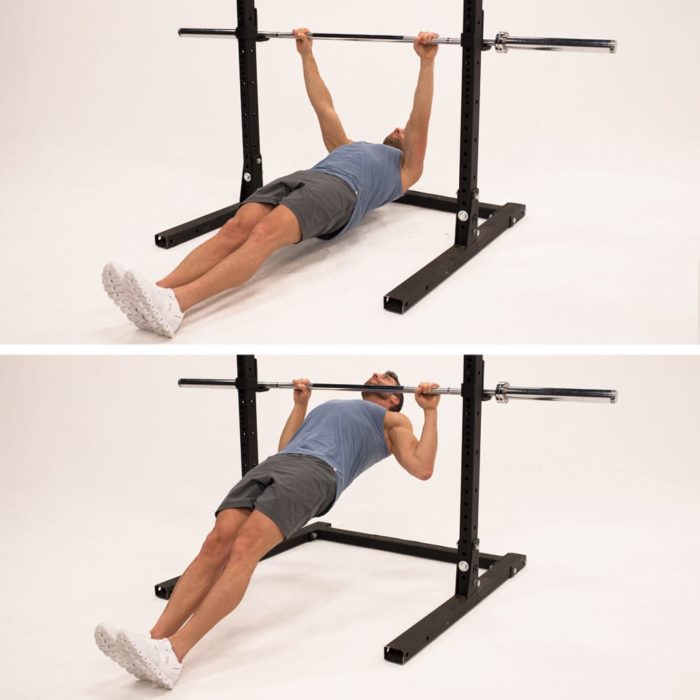
How to Perform:
- Secure a bar in a Smith machine or power rack at waist height and lie on the floor underneath it.
- Grab the bar with an overhand grip that’s slightly wider than shoulder-width apart and hang with your arms fully extended, your body straight from head to heels. Your shoulders should be directly below your hands, and your heels should be hip-width apart. This is the starting position.
- Keeping your core engaged, pull your chest to the bar as you squeeze your shoulder blades together.
- Pause, and then slowly return to the starting position.
Benefits: The inverted row builds strength in the forearms while also targeting the muscles of the shoulders and upper back.
8. Zottman Curl
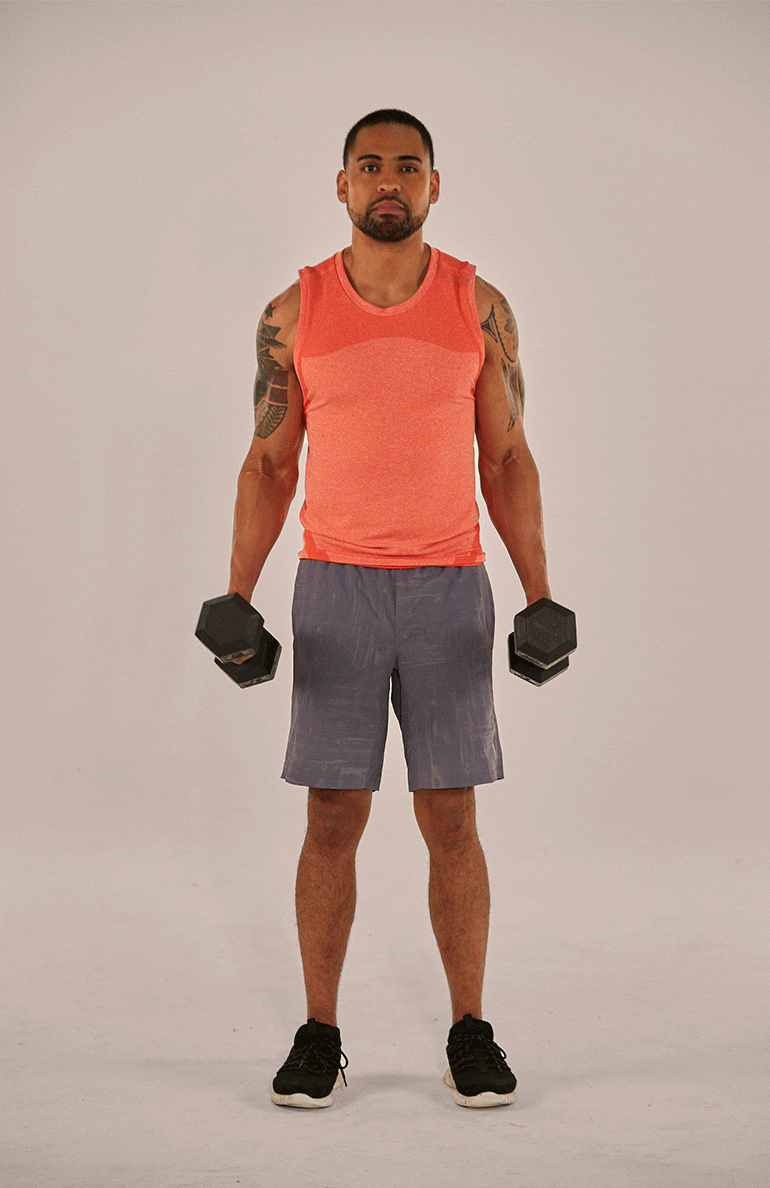
How to Perform:
- Stand tall holding a dumbbell in each hand at arm’s length by your sides, palms facing forward (underhand grip).
- Keeping your elbows tucked and locked by your sides, curl the weights toward your shoulders.
- Flip your grip 180 degrees (to overhand), lower the weights back down to your sides, and then flip your grip again (to underhand) to return to the starting position.
Benefits: The mid-move flip of the wrist is what gives the Zottman Curl its forearm-strengthening edge, as it fires up the brachioradialis while also working the biceps.
9. Hammer Curl
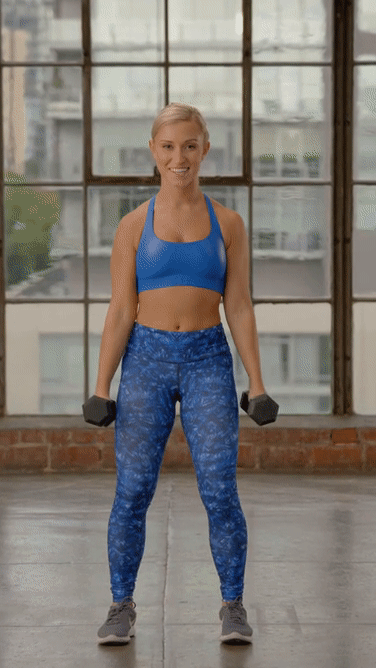
How to Perform:
- Stand holding a pair of dumbbells at arm’s length by your sides with your palms facing each other.
- Keeping your elbows tucked, your upper arms locked in place (only your hands and forearms should move), and your palms facing inward, curl the dumbbells as close to your shoulders as you can.
- Pause, and then slowly lower the weights back to the starting position.
Benefits: If traditional biceps curls are your go-to, switch up your muscle stimulus with this variation. The neutral grip shifts some of the work to the forearm, but don’t worry — you’ll still get an effective upper-arm workout.
10. Upright Dumbbell Row
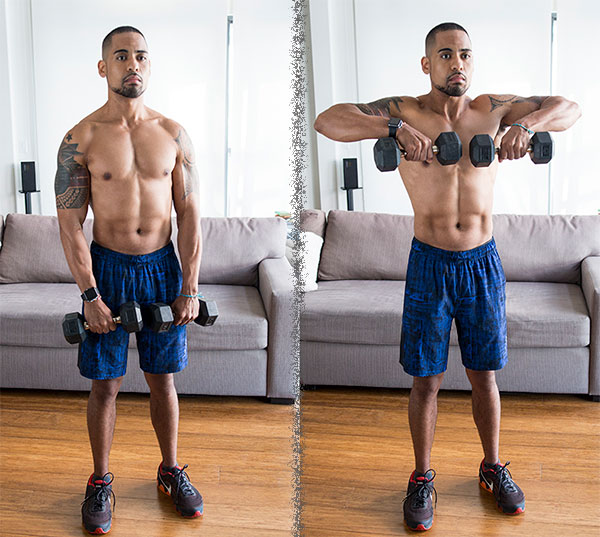
How to Perform:
- Stand tall holding a pair of dumbbells at arm’s length in front of your thighs, palms facing back.
- Keeping your core engaged, back straight, and weights close to your body, lift the dumbbells until your elbows reach shoulder height.
- Pause, and then reverse the movement to return to the starting position.
Benefits: Seeking sculpted shoulders? This is your move. Besides taxing your grip, the upright position typically allows you to lift more than what you can in a lateral or front raise.
11. Triceps Rope Pushdown
How to Perform:
- Hook a two-handled rope attachment up to a cable machine and set the pulley to shoulder height.
- Grasp the handles with your palms facing inward and step back a foot or two in order to create tension on the cable. Hinge forward at the hips so your torso is at a 30-degree angle.
- Keeping your elbows at your sides, extend your arms fully toward the floor.
- Reverse the movement to return to the starting position, and repeat.
Benefits: Any triceps pushdown will smoke your triceps, but the rope attachment adds a grip challenge that will light up your forearms.
12. Renegade Row
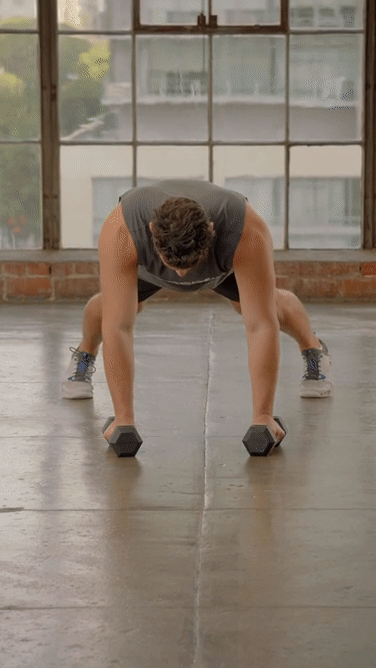
How to Perform:
- Assume a push-up position with your hands gripping two hex dumbbells. Your hands should be in line with and slightly wider than your shoulders. This is the starting position.
- Keeping your core engaged, elbows tucked, and body straight from head to heels, lift the dumbbell in your right hand to the side of your torso.
- Pause, and then return to the starting position. Repeat, this time rowing the dumbbell in your left hand. Continue alternating sides.
Benefits: The renegade row offers a little bit of everything: core strengthening, balance work, both unilateral and bilateral upper-body activation, and (since you never let go of the dumbbells) a major grip workout.
13. Suitcase Carry
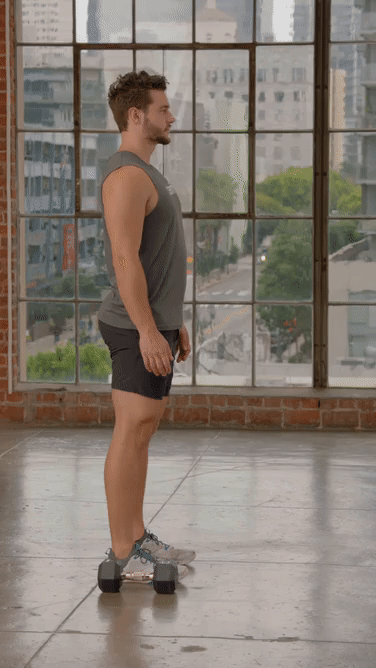
How to Perform:
- Stand with feet hip-width apart and a heavy dumbbell in one hand.
- Walk a few steps forward, keeping your hips and shoulders stable and core tight.
- Turn around then walk the other way.
- Repeat with the dumbbell in the opposite hand.
Benefits: Though primarily a core-strengthening move, the suitcase carry can help to increase grip strength.
14. Dumbbell Skier Swing
How to Perform:
- Stand tall with your feet hip-width apart holding a pair of dumbbells at your sides, palms facing each other.
- Keeping your arms straight and core engaged, push your hips back and allow your arms to swing directly backward.
- Drive through your heels, thrust your hips forward, and squeeze your glutes to return to standing, swinging the weights to shoulder height. Your arms should do minimal work here; the momentum from your hips should power the dumbbells.
- Reverse the move using a controlled swing backward to return to the starting position, and move immediately into the next rep.
Benefits: While the dumbbell skier swing is a hip hinge and not an arm exercise, it takes forearm strength and grip stamina to securely hold the dumbbells as you swing.
Looking to Put These Forearm Exercises to the Test?
Work on building muscles now by starting BODi’s LIIFT 4 program and incorporate these forearm exercises! Already completed that one, or ready for more intensity? Try LIIFT MORE.

